Claire Schrader is director of Making Moves, a personal development company that offers ritual theatre workshops and programmes. She has been involved in personal development work for over 25 years and has also trained as a core process shamanic practitioner. She has an established background in theatre having worked as a playwright, a performer and a teacher in UK drama schools.
Here, Claire writes in depth about her new book, Ritual Theatre: The Power of Dramatic Ritual in Personal Development Groups and Clinical Practice, what ritual theatre has meant to her personally, and why modern society may need this ancient practice now more than ever.
You’ve had a very interesting career. Can you talk about the path that led you to writing this new collected volume on ritual theatre?
I had my first awakening in the theatre. It was the first place where I first felt truly alive at a time when I was really lost. My first career was in nursing and I was square peg in a round hole. It was the theatre that brought me alive. Steve Mitchell refers to Petruska Clarkson concept of “physis”, the life force – it is a botanic term meaning the force in nature that enables a plant to grow. The ritual aspects of theatre was stimulating this life force in me which was enabling me like a seed to reach up from that dark place and find the light. It set the course of my life.
It wasn’t until much later when I started acting that I began to experience this life force in a more real way and it became a place of serious healing for me. At the time I had bucket loads of repressed emotions and I was sick of living my life on the sidelines. Performing liberated me – it was safe place for me to express emotions that were deeply buried me and gradually a completely “new me” began to emerge.
I went into the theatre professionally and for a while it was a very empowering experience. I was growing and developing at a fast rate, but then just as my career was taking off I got cast as the lead in a production at the Edinburgh Festival. In the rehearsal process the director took me into a very dark place – except it wasn’t acting. It was a kind of psychodrama without the healing element. He didn’t know the damage he was doing and I was in a terrible state for years afterwards – seriously depressed, and all the acting opportunities I had crumbled away.
So I started to write. I thought I could do a better job than the play that had brought me so much grief, and it became another kind of healing journey for me. I was delving into my unconscious and mythic elements started creeping in. It became a piece of ritual theatre – even though I didn’t know what ritual theatre was then. It was a natural expression for me, which came through in all my plays.
When I trained in dramatherapy, all these elements came together. I experienced ritual theatre as a potent healing force, and I wished I had known about it when I was going through my dark time. I would have got over it so much quicker. So when I qualified and started running public groups and workshops for people like me who wanted a more creative way to heal, I found myself turning to ritual theatre – because it was so effective. I became more and more interested in Joseph Campbell’s work, I worked with Malidoma Somé, I trained in shamanism, read loads of Jungian authors – and all these began to get into the work. I was amazed at the healing that was achieved for people through offering them a safe space and permission to visit those dark archetypal places so that they could find the stillness that lies at the “eye of the storm”.
And so after fifteen years of doing this I began to feel that it was important to document these discoveries and share them with others. And since there was no core text on ritual theatre, I brought together leading ritual theatre exponents such as Sue Jennings, Steve Mitchell, and Roger Grainger, along with newer voices. I was meeting US dramatherapists who were doing important work whilst I was out in America and so I saw the opportunity to bring US and UK dramatherapists together in the one book. When I met Saphira Linden, who had been producing ritual theatre performances since the seventies, I was inspired by what she had achieved and so was delighted to include two chapters on two of these productions, which demonstrates the power of ritual theatre on a very big scale.
So this is how I came to edit a book on ritual theatre. Looking back on it now, it feels like the most natural things for me to do. A kind of destiny – something I was meant to do and my life would have been the poorer without it.
Can you talk about the book, and its underlying thesis?

From a Making Moves ritual theatre workshop in the Netherlands
Ritual theatre is one of the most ancient form of healing that is still practiced in tribal societies today. As Sue Jennings points out, from earliest times ancient people healed themselves and explored what they couldn’t understand about the world through dramatic ritual. The book is saying that this is still relevant today, in fact it’s never been more important. The faster our world becomes, the further advances we make in science and technology, the more we need to return to our essential roots. Malidoma Somé says it very forcefully: “the Western Machine Technology is the spirit of death made to look like life”. He says we need to return to our spiritual roots and this is achieved most effectively through ritual. So it’s no surprise that in this modern age people are returning to ritual and to tribalism and this is being expressed most potently in youth culture.
So the book is about how ritual theatre can be expressed in a contemporary way that fits in with the way our lives are. People are hungering for this because the technological age is making us more and more disconnected, more in our heads and this is producing tremendous suffering under the labels of stress, fatigue and health problems. Ritual theatre along with the Arts Therapies counteract this. So the book includes ways in which ritual theatre is being brought into hospitals, institutions and work with marginal groups as well as to the general public.
You have formulated a personal development application of dramatherapy – myth-a-drama – and personal development is a key strand in the book. Why does ritual theatre lend itself so well to working with groups seeking personal development, as well as to traditional clinical practice?
When I started working in the personal development field, I assumed like many dramatherapists I could just take what I had learned in training, which included some very powerful processes, and offer it to clients. But I discovered that these clients had completely different needs and expectations. They were emotionally robust, they had done other kinds of healing work, they could deal with catharsis (many were therapists) and they wanted to go deep and break out of the patterns that had kept them locked away. So this required a completely different approach and boundaries, and it took me some years to formulate this which I discuss in the book. It was interesting to discover that Steve Mitchell (Chapter 8: “Pathfinder Studio’s Quest for Self Cultivation through the ‘Rituals’ of Theatre Making”) was reaching very similar conclusions.
In the ancient forms of ritual theatre, this was a place where our ancestors could completely let go, often going into trance, surrendering themselves to the ritual process. This was when medicine and spirituality were undifferentiated. This is why ritual theatre lends itself to working with more robust clients, because we are able to work with ritual theatre closer to its essential form, whilst maintaining certain boundaries – so that people can go back into their lives and operate normally. Ritual theatre enables clients to work deeply and cathartically and to emerge safely – this is normally in longer workshops and groups rather than in the classic psychotherapy group framework.
It is a lot harder bringing ritual theatre into clinical practice for the reasons that Debra Colkett outlines (Chapter 15: “Connecting with the Divine Feminine – Ritual Theatre in a Forensic Psychiatric Setting”). It is generally not understood by either managers or clients, and so it needs serious adaptation and re-framing in order for it to work within the contexts of those institutions, which has been achieved brilliantly by dramatherapists all over the world working with many different populations. Because Sue Jennings came from an anthropological background there has always been an element of ritual theatre in dramatherapy – and so this book is bringing us back to those roots even though the culture of many clinical settings pull us away from that. Sue Jennings, Steve Mitchell, Roger Grainger, Debra Colkett, Thalia Valeta all write about their clinical work using ritual theatre.
I have always seen dramatherapy as having a much wider context – as not just limited to people who need “treatment” which is the literal definition of therapy – but as a natural part of life, as it is in tribal societies and as it was expressed by our ancestors. If you look at the old druid ceremonies they had elements of ritual theatre and they were ways for everyone in the community to deal with the psychological challenges of life which rhymed with the seasons. The personal development application of dramatherapy is important at this time as it offers real potential for the growth of dramatherapy, just at a time when there are changes going on in the NHS which are seriously threatening the arts therapies.
Are there any misconceptions about this topic and, if so, how can the book help bring clarity?
For a start, when I say to people I’ve edited a book about ritual theatre, they say “what’s that?” Even my clients say that and when I tell them that’s what they’ve been doing, immediately the penny drops. They understand what it is. When they discover that this is one of the most ancient forms of healing then they are immediately intrigued. For many people the word ritual theatre sounds rather heavy and frightening. Whilst gradually ritual is being seen in a more positive context – there’s been enormous sensationalism in the press around ritual killings, satanic rituals, etc. Unfortunately this is what sticks in people’s minds, particularly the minds of the most vulnerable people which is why it is so hard to bring ritual theatre into many clinical settings. So I hope the book will help to educate people on what ritual theatre really is and will remove some of the damaging misconceptions and how it can be used for healing and growth.
What do you hope readers will take away from this book?
For the general reader who finds themselves intrigued or attracted to the idea of ritual theatre, my hope is that they discover what it is and why it is so important in society today. I hope that they will be inspired and excited by what ritual theatre is and will want to find a way of bringing more ritual theatre into their lives, their communities, and their organisations. The beauty about ritual theatre is that anyone can do it – and like Saphira Linden’s pageant, The Cosmic Celebration, it can involve thousands of people. I also hope it will inspire dramatherapists to bring more rituaI theatre into their work and will encourage them to “think big”. I hope too it will have an impact on the theatrical profession as I believe, along with James Roose Evans and others, that ritual theatre is coming back. It’s coming back into theatre, since there’s more and more theatre companies developing ritual theatre performances. And I hope too it will spread to communities, schools and to the public at large.
The book is also important in that it pays tribute to the work of Paul Rebillot (Chapter 7: “Paul Rebillot’s Modern Day Rites of Passage” by Steve Mitchell), who died last year and has made a huge impact on the practice of ritual theatre in dramatherapy. Steve Mitchell who worked with Rebillot extensively is most qualified to describe his work and how he has adapted it through his Pathfinder Projects and his clinical practice. There are two key chapters by Sue Jennings, a chapter on the ritual theatre aspects of psychodrama, and an unusual chapter by Gary Raucher investigating the metapsychology of ritual. Some chapters are more academic, some chapters describe in a lot of detail how ritual theatre works, but many of the chapters are very moving – and so I hope that the reader, if nothing else takes away how very moving it is both to work with and experience ritual theatre. So I hope it is a book that both the general reader and the specialist can enjoy and find valuable.
See the complete Table of Contents
Copyright © Jessica Kingsley Publishers 2011.






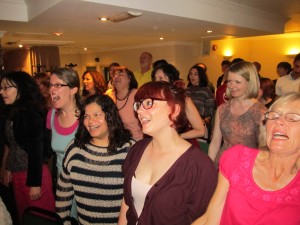











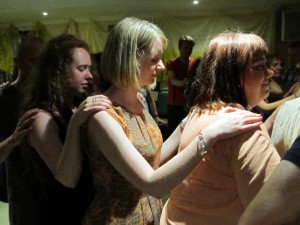










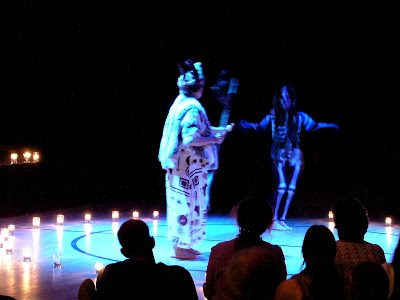

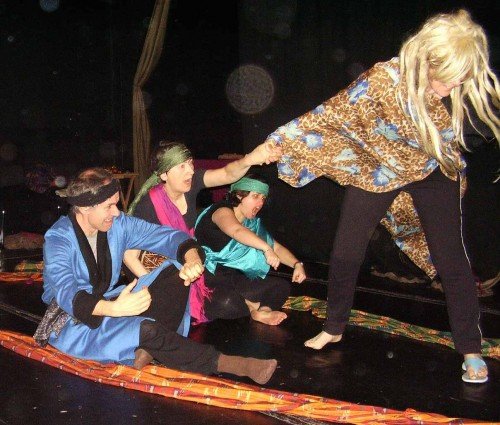
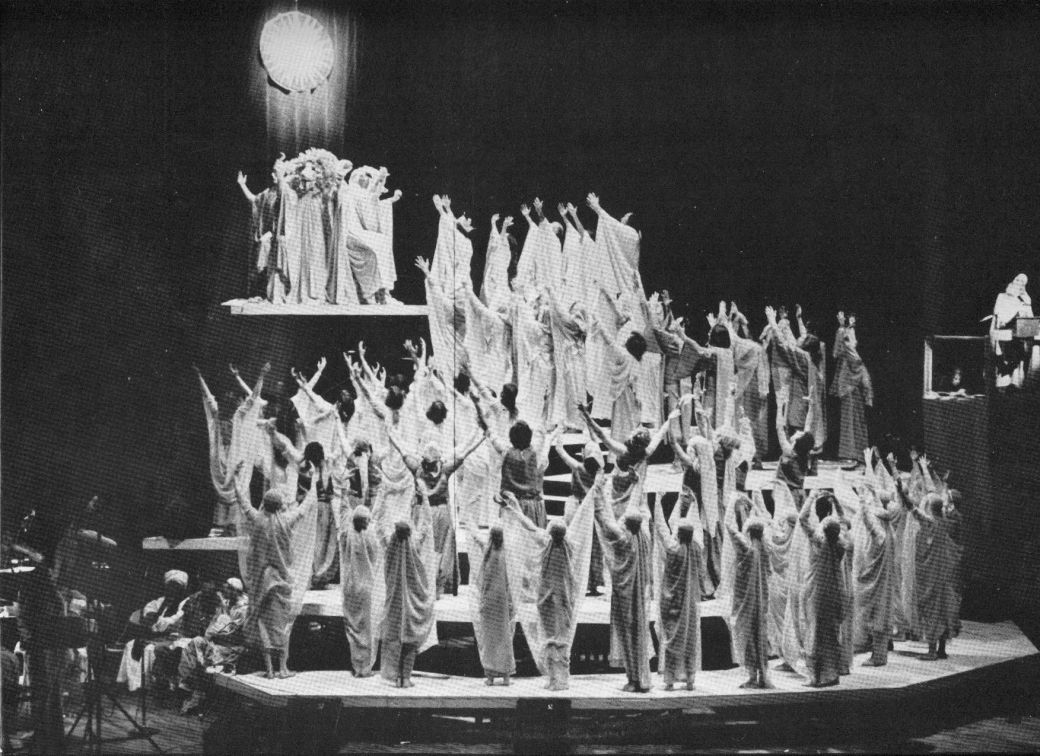
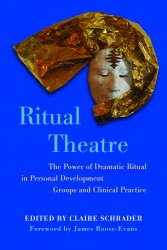
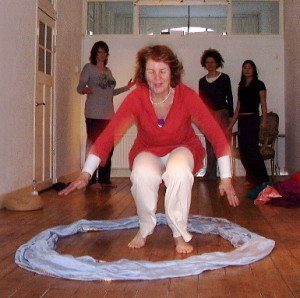

![SantaMonicaFinale[1] SantaMonicaFinale1 300x201 Ritual Theatre Book Celebration](https://i0.wp.com/www.makingmoves.net/wp-content/uploads/2012/02/SantaMonicaFinale1-300x201.png)






